#kavad
Explore tagged Tumblr posts
Text

Introducing THE SHIVA – Blue Theme Religious Figurine. Add divine elegance to your space with this stunning piece! 🔵🕉️
For Enquiry:- 📞+91-8800874369 | 📞+91-8800197369 | 📧 [email protected]
0 notes
Text
#SecretsOfLordShiva
🌱शिवरात्रि पर जानिए भगवान शिव जी को प्रसन्न करने का वास्तविक मंत्र कौनसा है ?
जानने के लिए पढ़ें पुस्तक "ज्ञान गंगा"

0 notes
Text
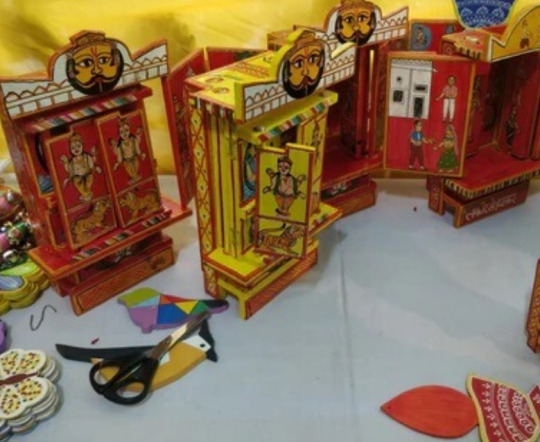


Celebrating the Resplendent Kavad Art of Rajasthan



Rajasthan's Kavad art is a vibrant testament to India's rich cultural heritage, weaving myths, legends, and daily life into intricately carved, foldable wooden shrines. Skilled artisans bring divine tales to life with precision and passion, showcasing Rajasthan's unique cultural identity. With intricately carved wooden panels, vivid natural colors, and delicate layered storytelling, Kavad art preserves the state's history, mythology, and folklore. Let's honor the artisans' dedication, preservation of traditional techniques, and Rajasthan's cultural legacy. Kavad art reminds us that art transcends time and space, culture is a living entity, and tradition meets innovation, making it a true masterpiece of Indian folk art.



#desiblr#kavad art#rajasthan#india#indian artist#indian culture#desi tumblr#desi tag#being desi#desi aesthetic#desi#desi academia#art#indian heritage#bharat
12 notes
·
View notes
Text
That moment when your DnD group wants horses to travel to the next town, so you throw the Hermit Post crew as NPCs to get horses from, and now your players are having Tango be their cart driver to the next town since none of the party can horse.
Dear hermitcraft fans, what ways should I slyly mess with my players (who as far as I know do not know HC) with my new NPCs? Cause they are here now.
5 notes
·
View notes
Video
Mila Makhan Mere Shiv Ka Pyar #shortsfeed #kawadyatra
#youtube#kavad yatra#haridwar#rishikesh#neelkanthmahadev#bholenath#sawan#sawan special#haryanvi#baba khanda haryana
0 notes
Text
Kawad Yatra 2024: कितने प्रकार की होती है कांवड़ यात्रा जानिए? जानिए यात्रा के नियमKawad Yatra 2024 : पंचांग के अनुसार 22 जुलाई से सावन की शुरुआत के साथ ही कांवड़ यात्रा शुरू हो जाएगी। इस दौरान शिव भक्त गंगा नदी में स्नान-ध्यान करते हैं और गंगाजल लाकर सावन शिवरात्रि पर शिव मंदिर में महादेव का अभिषेक करते हैं
#kawad yatra kab shuru hai 2024#kawad yatra#kawad yatra 2024 jal date and time#kavad yatra 2024#kanwar yatra 2024#kanwar yatra 2024 jal abhishek date#sawan 2024 start date and end date#kawad yatra 2024 start date#rituals#and significanceDharm News in Hindi#Dharm News in Hindi#Dharm Hindi News
0 notes
Text
मुख्यमंत्री ने दिए निर्देश कावड़ यात्रा मार्ग के साथ पार्किग स्थलों पर साइनेज, स्वच्छता एवं पेयजल आदि का हो कारगर प्रबंध
हरिद्वार:- मुख्यमंत्री पुष्कर सिंह धामी की अध्यक्षता में सोमवार को मेला नियंत्रण भवन (सी0सी0आर0) हरिद्वार में कांवड़ यात्रा-2023 की तैयारियों के सम्बन्ध में जन-प्रतिनिधियों, शासन के उच्चाधिकारियों एवं जिला स्तर के अधिकारियों ��े साथ उच्च स्तरीय गहन समीक्षा बैठक आयोजित हुई। समीक्षा बैठक में मुख्यमंत्री पुष्कर सिंह धामी ने अधिकारियों को कावड़ मेला आरंभ होने से पूर्व सभी आवश्यक व्यवस्थायें…
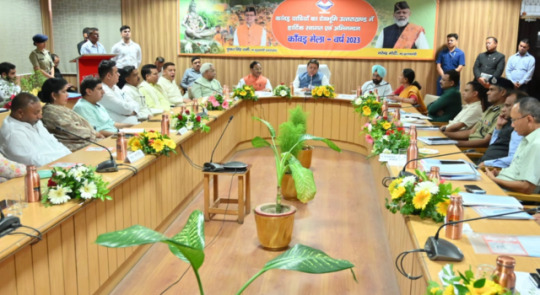
View On WordPress
#Additional Chief Secretary Radha Raturi#Anand Vardhan#Chief Minister Pushkar Singh#Chief Secretary Dr. SS Sandhu#haridwar#Kavad Mela#news#Principal Secretary RK Sudhanshu#Secretary Chief Minister Vinay Shankar Pandey#Secretary Dr. R. Rajesh Kumar#uttarakhand
0 notes
Text
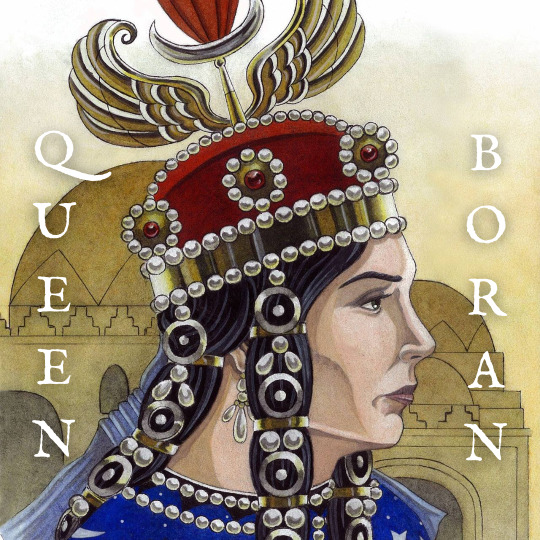
The first woman to rule the Sasanian Empire in her own right, Boran (590-632) did her best to bring peace and stability during her brief reign.
A crumbling empire
The Sasanian Empire was the last pre-Islamic power on the Iranian plateau. Boran was the daughter of King Khosrow II. Her mother was possibly the Byzantine princess Maria.
Boran was married to her brother, Kavad II, who overthrew their father in 628. His reign was short-lived, and he was succeeded by his son from another wife, Ardashir III. As a child, Ardashir had no real authority and was soon assassinated by the usurper Shahrbaraz.
Boran then had Shahrbaraz killed and took the throne. The exact timeline of her reign is debated, with some sources placing its beginning in 629 and others in 630.
To further complicate matters, Boran’s sister, Azarmidokht, ruled briefly in 630. This suggests that Boran was dethroned and later reinstated. Azarmidokht was described in later sources as a just, intelligent, and attractive woman. She was later depicted as seated, wearing a red embroidered gown and sky-blue studded trousers, holding a battle-axe in her right hand and leaning on a sword in her left. She was likely murdered, though the details of her death remain uncertain.
Stabilizing the empire
The situation Boran faced was dire, with both external threats and internal factional conflicts. Once on the throne, she immediately worked to strengthen her legitimacy by associating herself with her father and imitating his coinage. She proclaimed herself the "Bringer of Glory" and the "Restorer of the Race of Gods."
Boran was deeply committed to justice and worked to provide stability for her subjects. She issued open letters expressing her desire to improve their lives. She reduced taxes, which had been excessively high during her father’s reign, and focused on rebuilding infrastructure, including roads and irrigation systems that had fallen into disrepair.
She ensured the empire’s prosperity by minting a significant number of coins. She also improved relations with the Byzantine Empire, previously an adversary, and sent an embassy to Emperor Heraclius, which was well received.
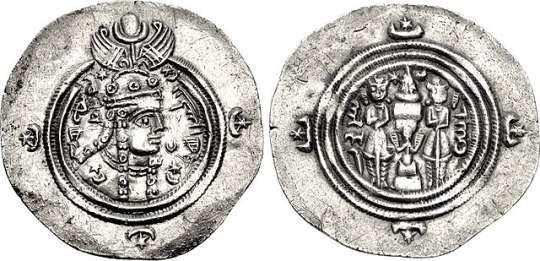
One of her most remarkable achievements was forging an unprecedented alliance among rival factions, allowing the Sasanian Empire to temporarily resist the Arab invasions.
Despite her efforts, Boran’s period of consolidation was short-lived, and the empire was already in decline. She died around 632, either from illness or assassination. The identity of her immediate successor is unclear—some sources claim it was her nephew, Yazdegerd III, while others suggest that it was her sister, Azarmidokht. In 651, the Sasanian Empire ultimately fell to the Islamic Caliphate.
Boran’s dedication earned her a place in Ferdowsi’s epic, the Shahnameh (Book of Kings).
If you enjoy this blog, consider supporting me on Ko-fi!
Further reading:
“Azarmigduxt”, Encyclopædia Iranica
“Boran”, Encyclopædia Iranica
Haeri Shahla, The Unforgettable Queens of Islam: Succession, Authority, Gender
Hodge Mehdi Malek, Vesta Sarkhosh Curtis, History and Coinage of the Sasanian Queen Bōrān (AD 629-631)
Hussain Ashna, “Boran”, in: Goucher Candice (ed.), Women Who Changed the World, Their Lives, Challenges, and Accomplishments Through History
#history#women in history#7th century#historyedits#women's history#women's history month#boran#iran#iranian history#sasanian empire#ruling queens#powerful women#Azarmidokht
81 notes
·
View notes
Text

Plate with king hunting rams, Sasanian, ca. mid-5th–mid-6th century CE. MET (ID: 34.33) The king as hunter had become a standard royal image on silver plates during the reign of Shapur II (A.D. 310–379). The theme, symbolizing the prowess of Sasanian rulers, was used to decorate these royal plates, which were often sent as gifts to neighboring courts. The king has various royal attributes: a crown and fillet, covered globe, nimbus with beaded border, and beaded chest halter with fluttering ribbons. The identity of the Sasanian king on this plate is uncertain. His crown identifies him as either Peroz (r. 459–484) or Kavad I (r. 488–497, 499–531).
Sasanian silver bowls were usually hammered into shape and then decorated in various complex techniques. On this plate, separate pieces of silver were inserted into lips cut up from the plate to provide high relief. The vessel was then gilded using an amalgam of mercury and gold, which could be painted onto the surface, and niello—a metallic alloy of sulfur and silver—was inlaid. The result was a vessel of varied surface contours and colors.
#sasanian#sassanid#sasanid#sassanian#iran#ancient iran#ancient persia#iranart#iran history#persianculture#persian history#persia#ancient art#ancient history#ancient culture#antiquité#antichità
32 notes
·
View notes
Photo

Boran & Azarmiduxt: Queens of the Sassanian Empire
Boran (r. 630, 631-632) and Azarmiduxt (r. 630-631) were the only queens of the Sassanian Empire who ruled with the power of absolute monarchs. Daughters of Shahanshah (king of kings) Khosrow II (r. 590-628), Boran and Azarmiduxt, tried to hold the empire together as it grappled with a civil war between two groups of the nobility, the Pahlavs and the Parsigs, and the Islamic invasion.
Boran
Amitchell125 (CC BY-SA)
Aftermath of the Byzantine-Sassanian War
After the Persians experienced a tremendous defeat in the Byzantine-Sassanian War of 602-628, the nobility declared Khosrow II's son Sheroe king of kings. He took the regnal name of Kavad II (r. 628 CE). Khosrow II was then executed by the nobility for starting the war and causing such strife in the Sassanian Empire. To secure his claim to the throne, Kavad II executed all of his brothers and half-brothers and spared only his sisters, Boran and Azarmiduxt. Because of the executions of their father and male siblings, Boran and Azarmiduxt went before Kavad II. They berated him for committing dishonor in taking the crown by killing their father and brothers and not earning it by right. The sisters also cursed Kavad II to have a miserable time in power. It is said that after hearing Boran and Azarmiduxt, Kavad II wept bitterly and tore the crown off his head in shame. After a few short months, Kavad II died of the plague, and his son Ardeshir III (r. 628-630) became the king of kings.
Ardeshir III was only seven years old, and Shahbaraz (r. 630), one of Khosrow II's generals in the Byzantine-Sassanian War, was enraged that a boy became king of kings instead of him. With the backing of Byzantine emperor Heraclius (r. 610-641), Shahbaraz rebelled, had Ardeshir III killed, and took power for himself. Shahbaraz was not a member of the Sassanian dynasty, and the empire's elites hated him because he had no claim to the kingship. The Pahlavs, an influential group of the nobility in the Sassanian Empire, killed Shahbaraz and dragged his body through the streets to dishonor him. The Pahlavs were the same group of people who ruled Persia during the Parthian Empire (247 BCE to 224 CE). They then installed Boran on the throne because she was the only direct heir of Khosrow II left alive who could legitimately take power.
Continue reading...
28 notes
·
View notes
Text

Tamil Hindus participate in a religious procession called Kavad Yatra during Panguni Uthiram festival in Ahmedabad, India, Friday, April 11, 2025. (AP Photo/Ajit Solanki)
8 notes
·
View notes
Text
I’ve been contacted multiple times by people asking for copies of my old Pantalone/Dottore/Baizhu posts since Natlan was released. I sincerely appreciate folks interest, but I will not be reposting those works. They were high-effort, I had a ton of fun writing them and educating folks on history, but the attention they received resulted in monetized content theft, and set off unstable people. Including an obsessive Pantalone fan who spent 6 months using numerous alts to harass me and anyone else who posted about the character, until I finally gave up and deleted. I wish I was joking.
That said… I won’t deprive you of the raw info and feel bad seeing how many people actually liked and missed the posts. Here’s a list of every inspiration Hoyo’s used for Pantalone, Baizhu, and Dottore’s roles/designs so far.
*DON’T READ THIS if you’re concerned with the possibility of spoilers.*
1. Pantalone/Magnifico, greedy/ lecherous villain archetype of the Commedia dell’arte
2. Il Dottore/Gratiano/Balanzone Lombardi, self-important/lecherous archetype of the Commedia dell’arte
3. The Mule/Magnifico from the “Foundation” series by Isaac Asimov (hint-hint, have you met him in Natlan yet? coughSimulankacough)
4. The demon Pan from “The Golden Compass” (shape shifting, hint-hint-hint)
5. Saint Pantaleon/Pantaleimon of Nicomedia (“All Things Like a Lion”, “All-Compassionate”)
6. Saint Pantaleon/Pantaleimon Sudzhaksky the Immortal
7. Puppet/Phantom/Beast/“True” form of Sorcerer King Ganondorf from “The Legend of Zelda” series
8. Raven & Trigon from “Teen Titans”
9. Zhu Bajie (patron saint of masseuses, hostesses, & prostitutes that inspired Ganondorf’s design) and Sun Wuking from 16th century “Journey to the West” by Wu Cheng’en
10. Emperor Wang Mang of China via Zhi Yi’s in-game Classical Chinese reference (Xiao Quan Zhi Yi)
11. Pantaleon Pantoja from “Pantaleon y las Visitadoras” comedic novel/movie about allegedly true military prostitution operation, by Mario Vargas Llosa (coughpearlgalleycough)
12. The Rouran Khaganate and Yujiulu Shelun (hint-hint, you’ve been on Pants’ boats already)
13. Pappus of Alexandria (Pappus Line, projective planes)
14. Pappus of the Attelan Farce (Harbinger to Commedia Pantalone)
15. Kavad I / Sheroe, meaning“The Lion”
16. Kavad II, King of Kings
17. “Siroe” Opera by Handel
18. Khosrow I / Anushirvan, the Immortal Soul
19. Khosrow II, last King of Kings
20. Babak Khorramdin (Zoroastrianism as with “Zandik”)
21. Polonius from Shakespeare’s “Hamlet”
22. Lotus-Eaters from Homer’s “Odyssey” (coughpearlgalleyagaincough, in-game achievement referencing lotus-eaters)
23. Apollonius of Tyana/Balinus, Master of the Talismans (corresponding to certain Sumeru works about a Jinn in a bottle: knock-off Jesus according to Philostratus’ embellishments)
24. Apollonius of Perga (A massive impact crater on the moon is named after him)
25. Mani the Manichaeist Prophet (also knock-off Jesus, commemorated on Baizhu’s birthday)
26. Richard Kuisel & Jean Coutrout, referencing human tendency towards conspiratorial gullibility
27. M.C. Escher, block-art-illusionist. Emphasis on his illusionist dualist works.
28. Xu Xian from “Legend of the White Snake”
29. “Lazzo of the Mirror” (Baizhu/Tartaglia interaction)
30. “Lazzo of Pantalone’s Story” (giant spoiler)
31. Eros (“Love”)
32. Erikepaios, “Power” as Ganondorf’s fragment of the Triforce represents
33. Mithraic lion, Zoroastrian lion deity wrapped in snake
34. Yaldabaoth, false Gnostic god characterized as lion-headed snake (see: Persona 5’s interpretation)
35. Aesclepius/“Surapio” via Enkanomiya
In-Game Hints: Enjou’s manipulations, Natlan’s abyssal enemies, solar themes, “segments,” and the Iniquitous Baptist. Research these characters/stories/histories/topics carefully, then look at how they relate to game lore. Happy hunting!
8 notes
·
View notes
Text
take my hand. let's name a vampire antagonist 2gether.
surname/place of origin name is cemented as tyrgost and i'm working on a suitable nobiliary particle, so i'm mostly trying to decide a good first name. middle names or other familial/inherited names might be a thing but i'm not gonna fuss over them
this is not strahd, but he is taking his place in a heavily modified cos game. still deciding on his appearance, since that will differ fairly heavily as well 👌
*konstantin sorry. typo.
4 notes
·
View notes
Text
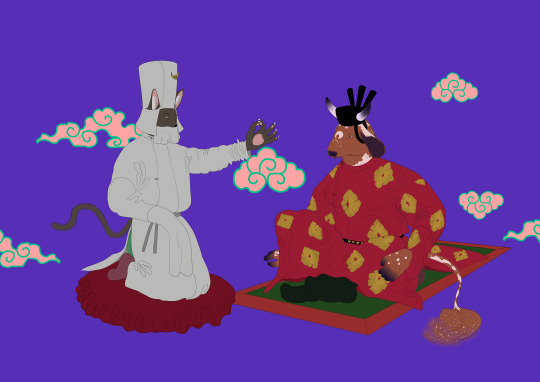
gift art for @/alchemicalopu / psamtik on twitter of their sona Kavad converting mine to Manichaeism (meownichaeism), in the tarim basin sometime in the 10th century
18 notes
·
View notes
Text
Cuckoldry and Adultery in pre-Islamic Persia
Mazdakism Mazdakism stands as one of the most impactful pre-Islamic Persian religions, with its establishment credited to Mazdak, a Zoroastrian priest. Mazdak succeeded in capturing the attention of the Persian Sassanian king Kavad, who granted him the authority to implement significant social reforms, many of which contradicted orthodox Zoroastrianism. These reforms encompassed practices such as…

View On WordPress
2 notes
·
View notes
Text
Painted Traditions: The Living Art Legacy of Rajasthan

Rajasthan Art: A Journey Through the Colors of Royal Culture
Rajasthan isn't just a land of forts and deserts—it's a living canvas of art, color, and cultural expression. From palace murals and embroidered fabrics to intricate paintings and terracotta sculptures, Rajasthan art reflects centuries of royal patronage, folk traditions, and spiritual symbolism.
Whether you're a traveler, collector, or art enthusiast, here’s a deep dive into the traditional art of Rajasthan and where you can experience it.
1. Miniature Paintings – The Royal Canvas
Rajasthan is world-renowned for its miniature paintings, especially from the Mewar, Marwar, and Kishangarh schools. Painted with natural colors and fine brushes, these artworks depict court scenes, epics like Ramayana and Mahabharata, and daily life in ancient India.
Where to Explore:
City Palace Museum, Udaipur
Local art galleries in Jaipur & Nathdwara
Handicraft shops near Lake Pichola
2. Phad & Pichwai – Stories on Cloth
🖼️ Phad Painting
Originating from Bhilwara, these are long scrolls depicting folk tales of local deities like Pabuji and Devnarayan, used by traditional storytellers.
🖼️ Pichwai Painting
Created in Nathdwara, near Udaipur, these depict Lord Krishna in different moods and festivals and are hung behind idols in temples.
3. Blue Pottery – Crafting Elegance with Earth
A famous Jaipur specialty, blue pottery is known for its vibrant turquoise and cobalt blue hues. It includes bowls, vases, tiles, and decorative items, all hand-painted and glazed without clay.
Tip: Makes a perfect souvenir or wedding gift.
4. Bandhani & Block Printing – Wearable Art
Rajasthan’s textiles are famous for their Bandhani (tie-dye) and Sanganeri/Ajrak block printing styles. These vibrant fabrics are used in sarees, turbans, dupattas, and home decor.
Great Shopping Spots:
Sanganer & Bagru villages near Jaipur
Hathipole Market, Udaipur
Shilpgram artisan fair
5. Wall Murals & Frescoes – Palaces That Speak
In places like Shekhawati and Bundi, entire towns are decorated with frescoes and mural art, turning walls into storybooks of royal weddings, hunting scenes, and mythological tales.
Tip: Hire a local guide to understand the stories behind the art.
6. Folk Art Forms Still Alive Today
Mandana Art – White chalk patterns on red clay floors, often drawn during festivals.
Kavad Craft – A painted storytelling box made of wood that unfolds like a theatre.
Terracotta Figures – Made in Molela village, often used in temples and rural homes.
7. Where to Stay for an Artistic Experience
For travelers seeking a culturally rich stay, Udaipur family-friendly hotels like Bhairavgarh combine Rajasthani décor with modern luxury, offering easy access to art hubs and fairs.
8. Where to Dine After an Art Walk?
After a day of soaking in culture, enjoy a relaxing meal at the best restaurant in udaipur. The ambiance reflects Rajasthan’s heritage, and the menu includes traditional favorites like Dal Baati Churma and Gatte ki Sabzi.
9. Art-Inspired Weddings?
Looking to add cultural elements to your wedding? Best wedding venues in Udaipur like Bhairavgarh can incorporate local art into décor, gift hampers, and themed functions like mehendi or haldi.
Final Thoughts
Rajasthan’s art is not confined to museums—it’s in its homes, walls, fabrics, and festivals. Whether you're watching a puppet show, buying a hand-painted diary, or marveling at a temple mural, you're stepping into a world where every stroke tells a story.
0 notes